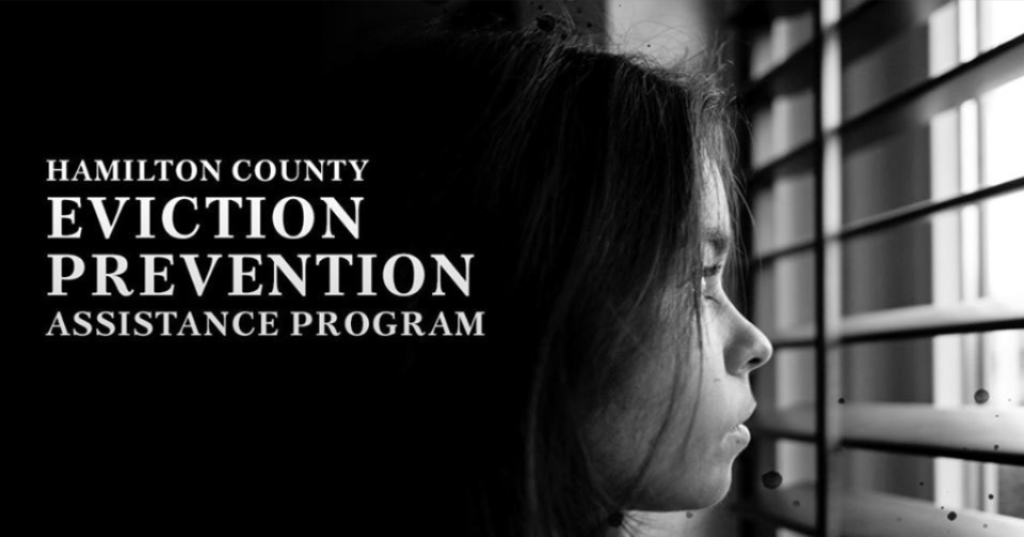
Cincinnati and Hamilton County are in the midst of an eviction crisis. According to EvictionLab.org, opens a new window, evictions are landlord-initiated forced moves that happen to people who rent their home. More than 12,000 evictions take place each year in Hamilton County, a rate of eviction 34 percent higher than the national average.
The affordable housing crisis across the county is inextricably linked to the eviction crisis. Many lower-earning families spend at least half of their wages on housing costs. Eviction Lab reports 1 in 4 families spends over 70 percent of their income on rent and utilities alone. This imbalance is made worse by the fact that incomes for people of modest means have flatlined (minimum wage in Ohio sits at $8.55 per hour) while rental prices, particularly in urban areas, are skyrocketing.
With a county-wide shortage of nearly 40,000 affordable housing units, families in Cincinnati are often forced to live above their means or sometimes stay with friends or family members to have a roof over their heads. This housing insecurity makes families vulnerable to eviction and experiencing homelessness. Combine that with an unexpected circumstance like sudden job loss or a medical emergency that causes the bills to pile up and you have a recipe for disaster.
To help mitigate this growing eviction crisis, Legal Aid Society of Southwest Ohio, opens a new window and the Community Action Agency, opens a new window have created a new program to keep families stable in their homes by preventing eviction.
The Eviction Prevention Assistance Program helps lower-income renters who are worried about potential eviction, understand and access the resources available to them. Through the program, eligible renters who are behind on their rent but are also able to pay the rent going forward may receive emergency cash assistance up to $2,000 to bring them current. Renters may also be eligible for free legal representation by Legal Aid if their case qualifies.
To qualify for cash assistance you must be a resident of Hamilton County, present a photo I.D., show ability to pay your ongoing rent, have a Notice to Leave the Premises or have an eviction hearing scheduled, and be income eligible.

When a family is evicted, it affects the physical and emotional health of everyone involved. Families with children make up the group most vulnerable to eviction, according to the National Low Income Housing Coalition, opens a new window. Think about it. You’ve just been expelled from your home, possibly the only home you’ve ever known. You’re expelled from your community made of friends, family members, neighbors, and supporters. Your children have to switch schools. You can lose your possessions if they are put out on the street or you can’t afford to store them. Legal evictions become court record and can prevent you from obtaining future housing.
Eviction has been linked to stress, depression, job loss, and physical manifestations of undergoing a traumatic situation. It is inextricably linked to poverty status and other systemic oppression. Neighborhoods with the highest rates of eviction also tend to have the highest rates of poverty and the highest rent burden. Neighborhoods like Over-the-Rhine and the West End experiencing rapid gentrification are especially vulnerable.
While eviction has the power to affect anyone, the racial composition of a neighborhood is also a strong predictor of eviction rate. The relationship between race and eviction can be traced to historical and current practices of segregation and displacement, along with federal policies such as redlining that prevented Black families from owning homes or living in certain parts of town. (The Color of Law: A Forgotten History of How Our Government Segregated America , opens a new windowby Richard Rothstein is an excellent resource for learning more about this topic.)
To help spread the word about the Eviction Prevention Assistance Program, the Library is helping to host a series of information sessions on renters’ rights and options. The first of these sessions took place on August 12 at the Miami Township Branch Library. The next sessions are from 6 – 8 p.m. Monday, August 19 at the Norwood YMCA, September 9 at the Blue Ash YMCA, and September 16 at the Reading Branch Library. Dinner is provided at each session and children are welcome. The Library will continue to promote further series locations as they are scheduled.
It will take more than program efforts to end this crisis. We also need policy change, protections for affordable housing, living wages, and widespread systemic change. The Eviction Prevention Assistance Program is taking on this important first step and building a bridge to end the larger eviction crisis one tenant at a time.
For more information, call CAA at 513-569-1840, Option 3, or, if you need immediate legal assistance, call Legal Aid at 513-241-9400.
Disclaimer: The Legal Aid Society and Community Action Agency make decisions to represent a tenant in an eviction or other civil matter on a case by case basis. Attending an information session about The Eviction Prevention Assistance Program does not guarantee funding or representation.


Add a comment to: Combating Cincinnati’s mounting eviction crisis